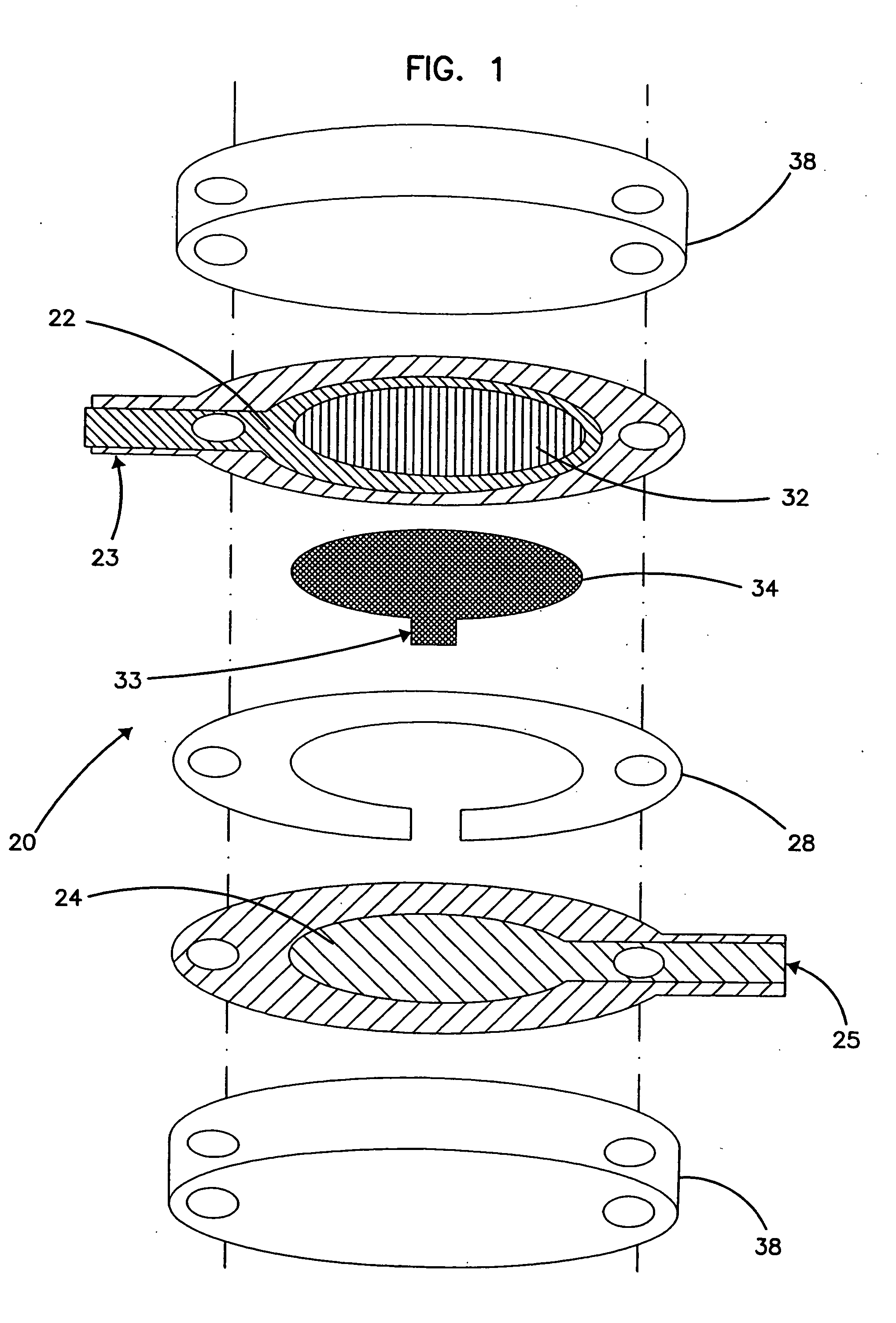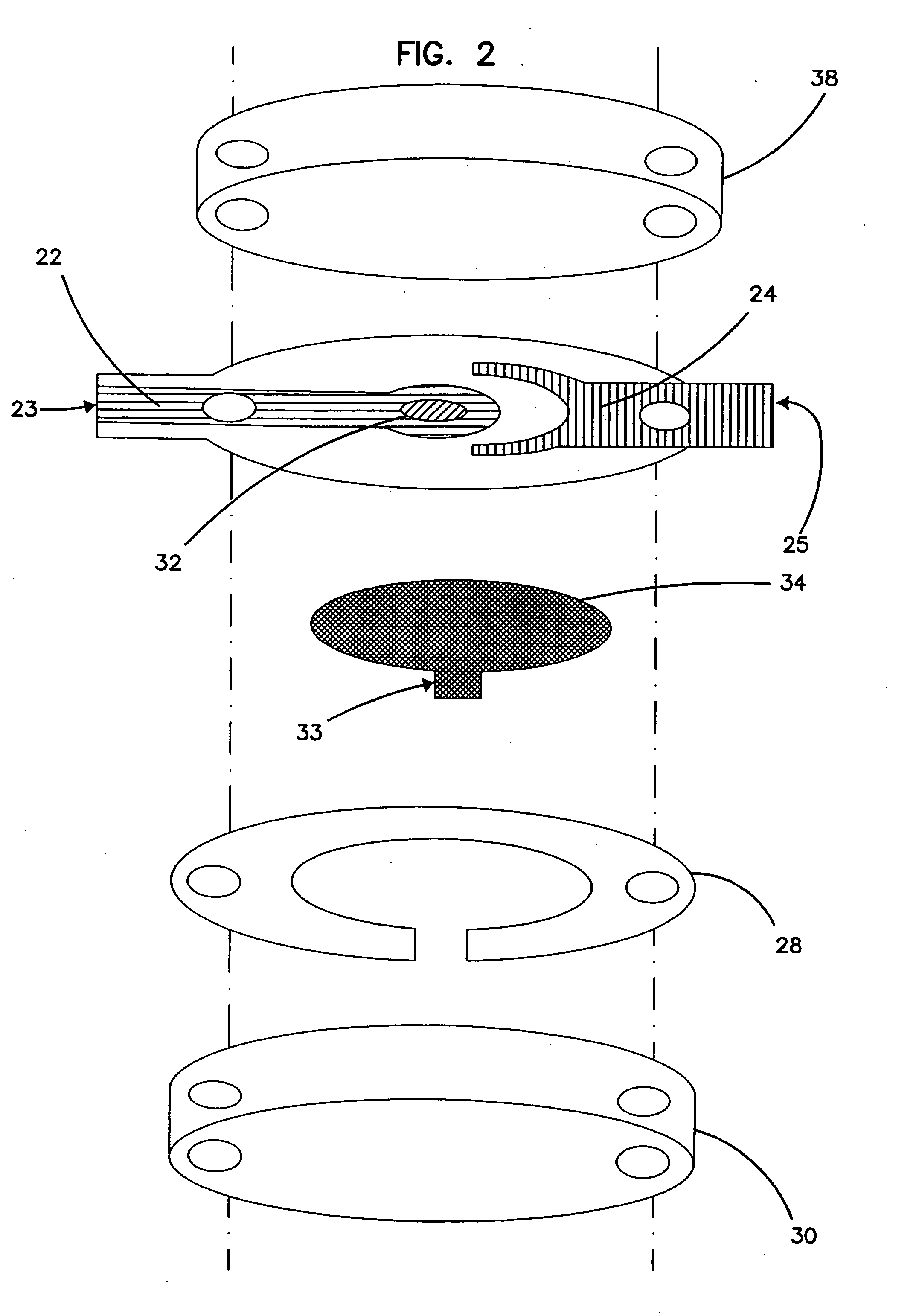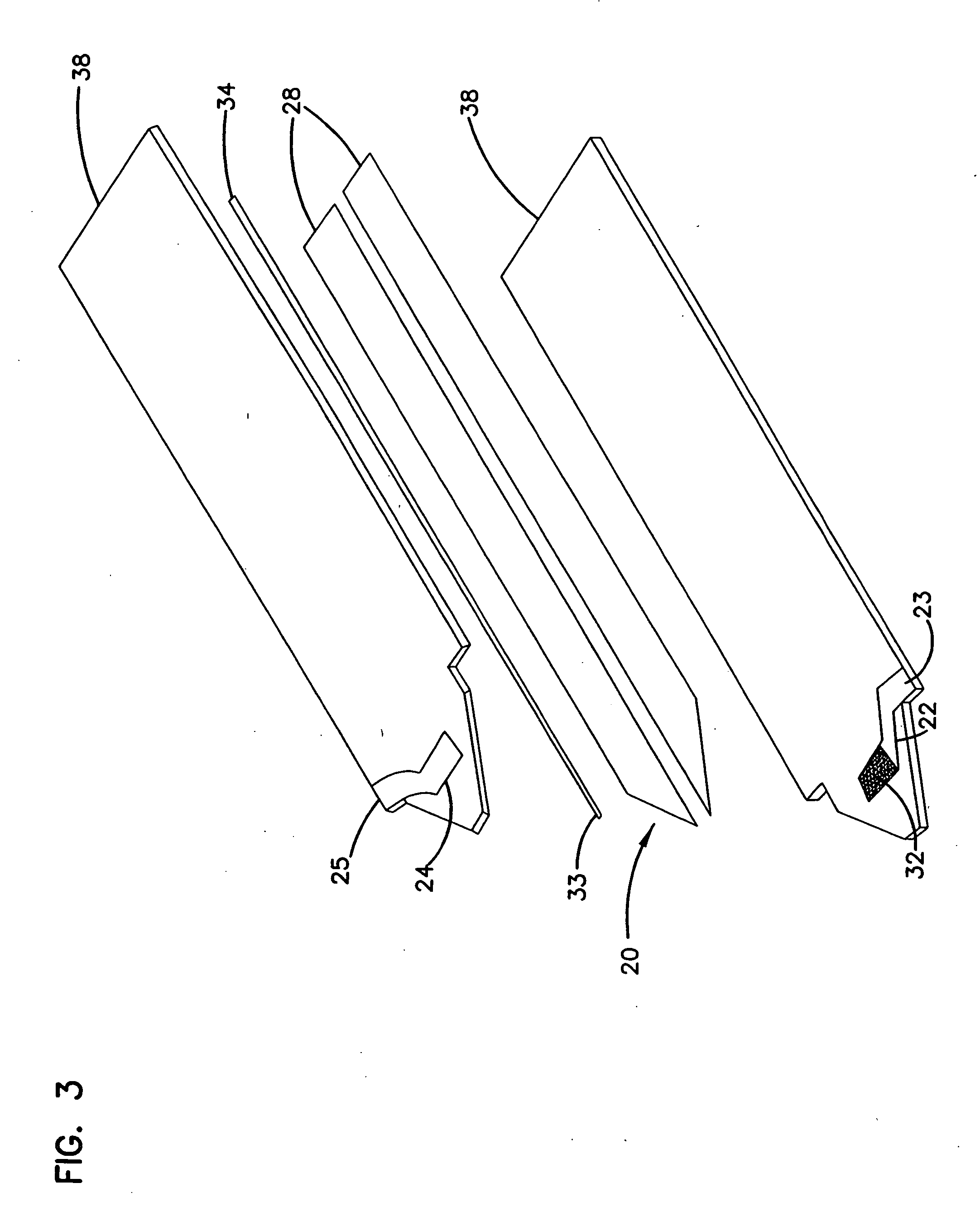Small volume in vitro analyte sensor
an in vitro analyte sensor, small volume technology, applied in the field of analytical sensors, can solve the problem of inconvenient patient procedures, and achieve the effect of reducing the volume of samples
- Summary
- Abstract
- Description
- Claims
- Application Information
AI Technical Summary
Benefits of technology
Problems solved by technology
Method used
Image
Examples
example 1
Preparation of a Small Volume In Vitro Sensor for the Determination of Glucose Concentration
[0115] A sensor was constructed corresponding to the embodiment of the invention depicted in FIG. 1. The working electrode was constructed on a Mylar™ film (DuPont), the Mylar™ film having a thickness of 0.175 mm and a diameter of about 2.5 cm. An approximately 12 micron thick carbon pad having a diameter of about 1 cm was screen printed on the Mylar™ film. The carbon electrode was overlaid with a water-insoluble dielectric insulator (Insulayer) having a thickness of 12 μm, and a 4 mm diameter opening in the center.
[0116] The center of the carbon electrode, which was not covered by the dielectric, was coated with a redox mediator. The redox mediator was formed by complexing poly(1-vinyl imidazole) with Os(4,4′-dimethoxy-2,2′-bipyridine)2Cl2 followed by cross-linking glucose oxidase with the osmium polymer using polyethylene glycol diglycidyl ether as described in Taylor, et al., J. Electroa...
example 2
Response of the Glucose Sensor to Interferents
[0129] A sensor constructed in the same manner as described above for Example 1 was used to determine the sensor's response to interferents. The primary electrochemical interferents for blood glucose measurements are ascorbate, acetaminophen, and urate. The normal physiological or therapeutic (in the case of acetaminophen) concentration ranges of these common interferents are: [0130] ascorbate: 0.034-0.114 mM [0131] acetaminophen: 0.066-0.200 mM [0132] urate (adult male): 0.27-0.47 mM
Tietz, in: Textbook of Clinical Chemistry, C. A. Burtis and E. R. Ashwood, eds., W. B. Saunders Co., Philadelphia 1994, pp. 2210-12.
[0133] Buffered glucose-free interferent solutions were tested with concentrations of the interferents at the high end of the physiological or therapeutic ranges listed above. The injected sample volume in each case was 0.5 μL. A potential of +100 mV or +200 mV was applied between the electrodes. The average charge (Qavg) wa...
example 3
Sensor with Glucose Dehydrogenase
[0135] A sensor similar to that described for Example 1 was prepared and used for this example, except that glucose oxidase was replaced by pyrroloquinoline quinone glucose dehydrogenase and a potential of only +100 mV was applied as opposed to the +200 mV potential in Example 1. The results are presented in Table 3 below and graphed in FIG. 10.
TABLE 3Sensor Results Using Glucose DehydrogenasenQavg (μC)90% rise time (s)buffer421.7 ± 5.214 ± 3 3 mM glucose / buffer4 96.9 ± 15.024 ± 6 6 mM glucose / buffer4190.6 ± 18.426 ± 610 mM glucose / buffer4327.8 ± 69.342 ± 9
[0136] The results indicated that the charge obtained from the glucose dehydrogenase sensor was much larger than for the comparable glucose oxidase sensor, especially for low concentrations of glucose. For 4 mM glucose concentrations the measurements obtained by the two sensors differed by a factor of five. In addition, the glucose dehydrogenase sensor operated at a lower potential, thereby redu...
PUM
| Property | Measurement | Unit |
|---|---|---|
| volume | aaaaa | aaaaa |
| volumes | aaaaa | aaaaa |
| volume | aaaaa | aaaaa |
Abstract
Description
Claims
Application Information
 Login to View More
Login to View More - R&D
- Intellectual Property
- Life Sciences
- Materials
- Tech Scout
- Unparalleled Data Quality
- Higher Quality Content
- 60% Fewer Hallucinations
Browse by: Latest US Patents, China's latest patents, Technical Efficacy Thesaurus, Application Domain, Technology Topic, Popular Technical Reports.
© 2025 PatSnap. All rights reserved.Legal|Privacy policy|Modern Slavery Act Transparency Statement|Sitemap|About US| Contact US: help@patsnap.com



